Articles tagged with: bacteria
EARTH, WATER »
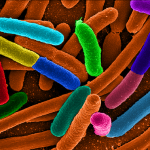
There wouldn’t be so many spy novels if there weren’t something so delightfully compelling about the idea of being a spy: you’re invited to imagine that your job is to sneak around in a trench coat and fedora, talking out of the side of your mouth and pretending to be something or someone you’re not in order to gather information on behalf of the resistance.
Knowing something you’re forbidden to know, or that other people want to know but don’t – or that other people don’t think you know, imparts a …
FEATURED, Uncategorized »
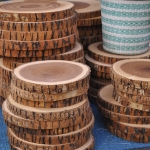
ARCHITERIALS is a year old now, and like most healthy, well-adjusted one-year-olds it needs to be changed constantly, crawls all over my apartment, and makes strange burbling noises. No, really – it does. It’s terrifying.
Over the past year I’ve profiled approximately 65 materials and learned about blogging, bacteria, and biscuits, although I must confess that the biscuts were a side project. A delicious, buttery side project. Anyhow, to celebrate the birthday of ARCHITERIALS and the fact that the tagline “Investigating architectural materials since 2010” has finally attained temporal legitimacy, I’ve compiled for this, …
EARTH »

Joints are like an after-school program for cracks in concrete. If we fail to provide a place for cracks to occur safely, under supervision, and in aesthetically pleasing configurations, we as a society will be faced with complete anarchy in our walls and slabs. This horrifying chaos could lead to unwed, underage cracks begetting more cracks and, possibly even more alarming, cracks on crack.
Sometimes, despite the provision of joints and reinforcing in concrete to resist tension, construction goes horribly wrong. Say the mix is off, or the wrong strength is used by mistake, or perhaps …
EARTH »

Think of public restrooms as the Arctic expedition, Sahara desert traverse, or trek through the Amazon of architecture; the public restroom is one of those extreme environments where you plan for the worst and hope for the best. Your typical public toilet faces all possible byproducts of humankind, harsh chemical cleaners, random acts of vandalism, water, fungus, insects, rodents, and the full spectrum of microorganisms. Ceramic materials are specified in public restrooms because smooth glazed surfaces are easier to keep clean and damaged tiles can be replaced without too much trouble, but the chemicals required to sanitize public …
METAL »
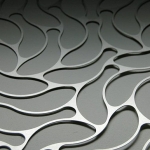
A long time ago before we were born, probably after he’d had a few and was waxing philosophical, Chicago architect Louis Sullivan wrote:
“It is the pervading law of all things organic, and inorganic,
of all things physical and metaphysical,
of all things human and all things super-human,
of all true manifestations of the head, of the heart, of the soul, that the life is recognizable in its expression, that form ever follows function. This is the law.”
Sullivan designed intricate ornamental elements inspired by natural forms, which were meant to look completely complex and awesome as well as to express …
FIRE, WOOD »
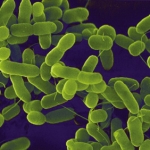
I read a statistic somewhere* that said that the biomass of all the ants on earth weighs more than the biomass of all the human beings on earth. I don’t know if that is true, but if it is that would mean there are a LOT of ants out there. I mean, if your average run-of-the-mill ant weighs 3 milligrams, and the average human (accounting for the “epidemic of obesity” in certain countries that shall remain nameless) weighs in at about 150 pounds or so, and there are billions of human beings on the planet … …
METAL »
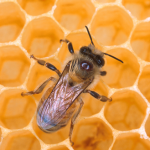
Until today I never in my wildest dreams imagined that bees could produce any kind of silk. I thought worms were in charge of silk production and that was the end of it. It pains me to admit this (you have no idea how it pains me) but I was wrong. Not only are silk worms falling down on the job, as it turns out spiders aren’t any better! Apparently it’s down to good old Apis mellifera (also known as the western honey bee) to make the silk that takes care of business. …







